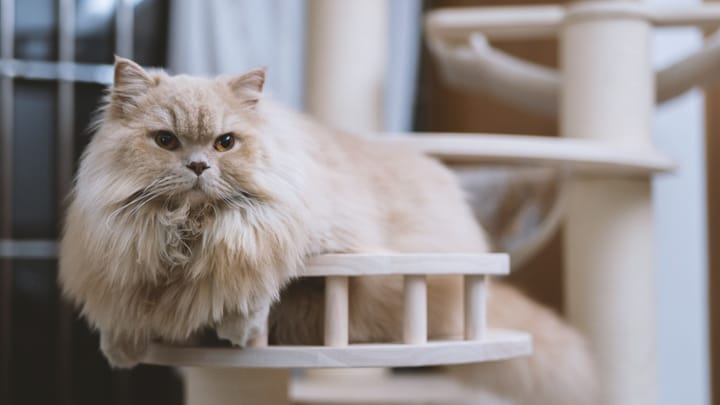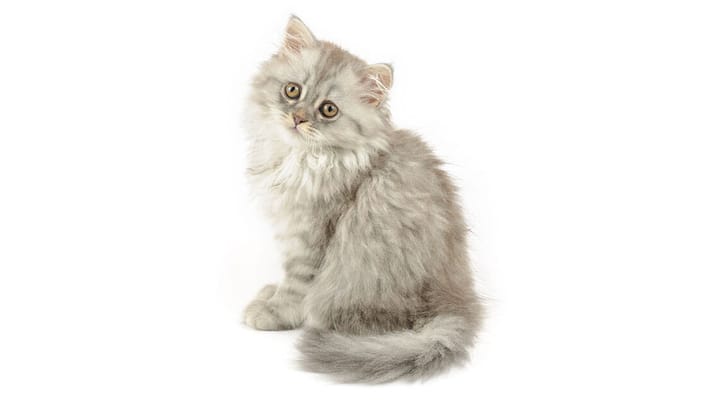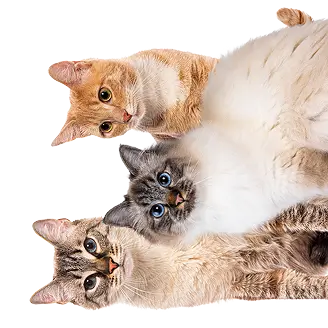British Longhair
Other name: Highland Straight


Just like their short-haired cousin, British Longhairs are recognisable by their round and cuddly look. Whatever the colour of their coat, they are dignified and elegant, but it’s the blue variety that put this breed on the map! Their long fur was long considered a defect, but it is now admired as a whimsical, even endearing trait. One thing is certain: they are a quiet force… with plenty of charm!
|
Life expectancy |
The British Longhair has a life expectancy of between 14 and 18 years |
|
Temperament |
|
|
Adult size |
Female
Approximately 11 in
Male
Approximately 12 in
|
|
Adult weight |
Female
Between 7 and 9 lb
Male
Between 11 and 18 lb
|
|
Coat colour
Black / seal, blue / slate grey, chocolate, lilac, cinnamon, fawn, red, white |
Black Brown White Red Cream Blue |
|
Type of coat
Long |
Long |
|
Eye colour
Blue, aquamarine, golden yellow, odd / dichroic |
Blue
Green
Yellow
Brown
Odd-eyed
|
|
Purchase price |
The British Longhair costs between £600 and £900 |
The British Longhair is much rarer than the short-haired variety, but they are rapidly gaining in popularity in Europe and elsewhere in the world!
More details about the British Longhair
British Longhair: Origins and history
Their history is of course linked to that of the British Shorthair. The latter has been popular in England since 1871, when they won their first show. But unfortunately, they were almost completely wiped out during the Second World War. In an attempt to keep the breed alive, the few survivors were crossed with non-pedigree domestic cats. However, cats from these pairings were more slender than their bulky ancestors.
To create rounder, more stocky descendants, new crosses were made, only this time with Persians, thus introducing the long-haired gene. Although the British Longhair was long overshadowed by their short-haired cousins, they are now appreciated for their rarity as much as for their silky appearance.
Physical characteristics of the British Longhair
Like their short-haired counterpart, the British Longhair is weighty, strong and solid. Their head is spherical with small ears, spaced-out eyes and a short, un-squished muzzle. Their body is round and stocky, giving them the snuggly appearance of a teddy bear. The density of their coat is characteristic to the breed. Although they come in a wide variety of colours, blue is definitely one that they wear well!
British Longhair: Characteristics
British Longhair: Behaviour
Breed compatibility British Longhair
British Longhair: Purchase price
The average price of a British Longhair kitten is between £600 and £900. This cost varies according to the lineage, breeding, age and sex. For your monthly budget, you should allow on average £35 per month to adequately meet their needs.
British Longhair: Shedding
Heavy !
In the spring moult period, they tend to lose a fair bit of fur. This means it’s best to get your cat used to frequent grooming sessions, so that when they come around they will be peaceful and pleasant.
British Longhair: Grooming
A regular brushing is essential to eliminate their dead hairs and ensure that knots don’t develop, as their felt-like fur has a tendency to get a bit matted.
British Longhair: Health
Their life expectancy is on average 14 to 18 years.
Their long, dense fur protects them from the cold and bad weather.
Being fairly quiet and contemplative, the Highland Straight has a propensity for weight gain. If you serve their food in interactive bowls, play with them daily and follow your veterinary team’s advice, they will have a much better chance of keeping active and healthy.
British Longhairs can suffer from the same diseases as other domestic cats, such as those associated with oral health. But it’s also important to be on the lookout for the following other conditions:
- Neonatal erythrolysis has a higher diagnosis rate among British Longhairs than other breeds. The disease occurs in newborns and causes death.
- Polycystic kidney causes the development of cysts that prevent the normal functioning of the kidney and leads to kidney failure. A tailored diet can delay the development of the disease, alleviate the symptoms and allow the cat to live longer.
- Hypertrophic myocardiopathy is a disease that can affect many non-pedigree breeds. In the long run, it can lead to heart failure. Screening is done by echocardiography, which is usually repeated annually. Cats presenting with the illness may be given treatment to alleviate their symptoms.
Pairings are permitted among both British Longhairs and British Shorthairs. Some other pairings may sometimes be permitted according to the various cat associations.
There are normally about 4 kittens in a British Longhair litter.







